Light is essential to cinematography but it’s only as effective as you can control and shape it. Learning how to shape large light sources is something every filmmaker and cinematographer should master. Director of Photography Shane Hurlbut, ASC and his Key Grip Dave Knudsen teach you how to control light, prevent light from bouncing into the ceiling, and how to wrap light under your talent’s face.
Watch Cinematography Tip: How To Shape Large Light Sources
Control the light with Egg Crate
There are some times when you’d want this beautiful large source, which is backlighting Dave Knudson to bloom. It looks the best when you can control its bloom. It has such a beautiful, soft wrap. If you control the light, like with this egg crate, it actually makes the light harder.
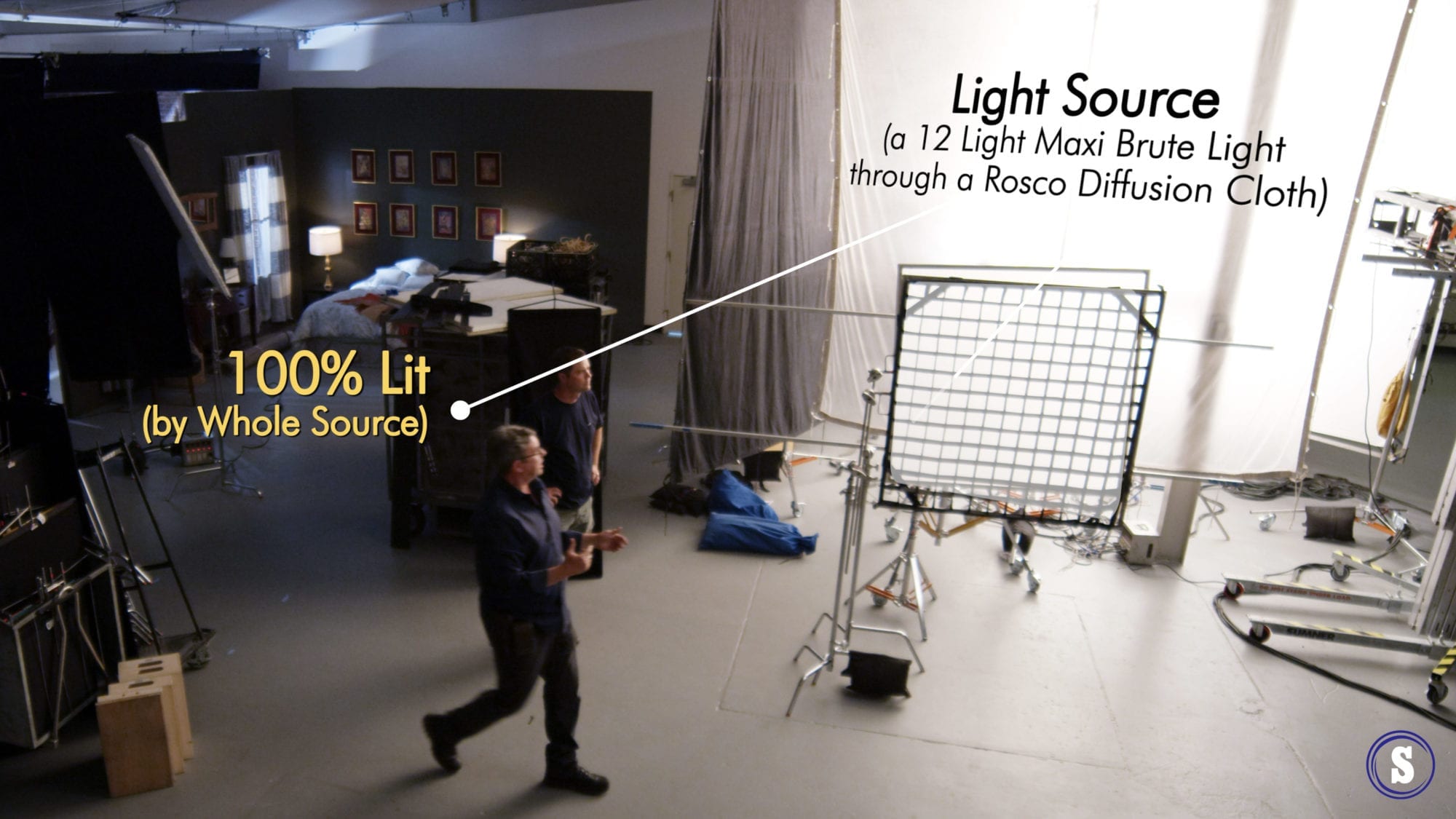
When you stand away from the LCD, you can see the whole source
When I stand here, I am actually seeing the whole source. When I stand closer to the egg crate snap grid, I am only seeing 1/3 of the source. That light is going to be much harder on me than if I’m able to see the whole source.

When I step closer to the egg crate, I see less of the source
A big thing that I like to be able to do is to create huge sources and then shape them. So, let’s take this grid apart.
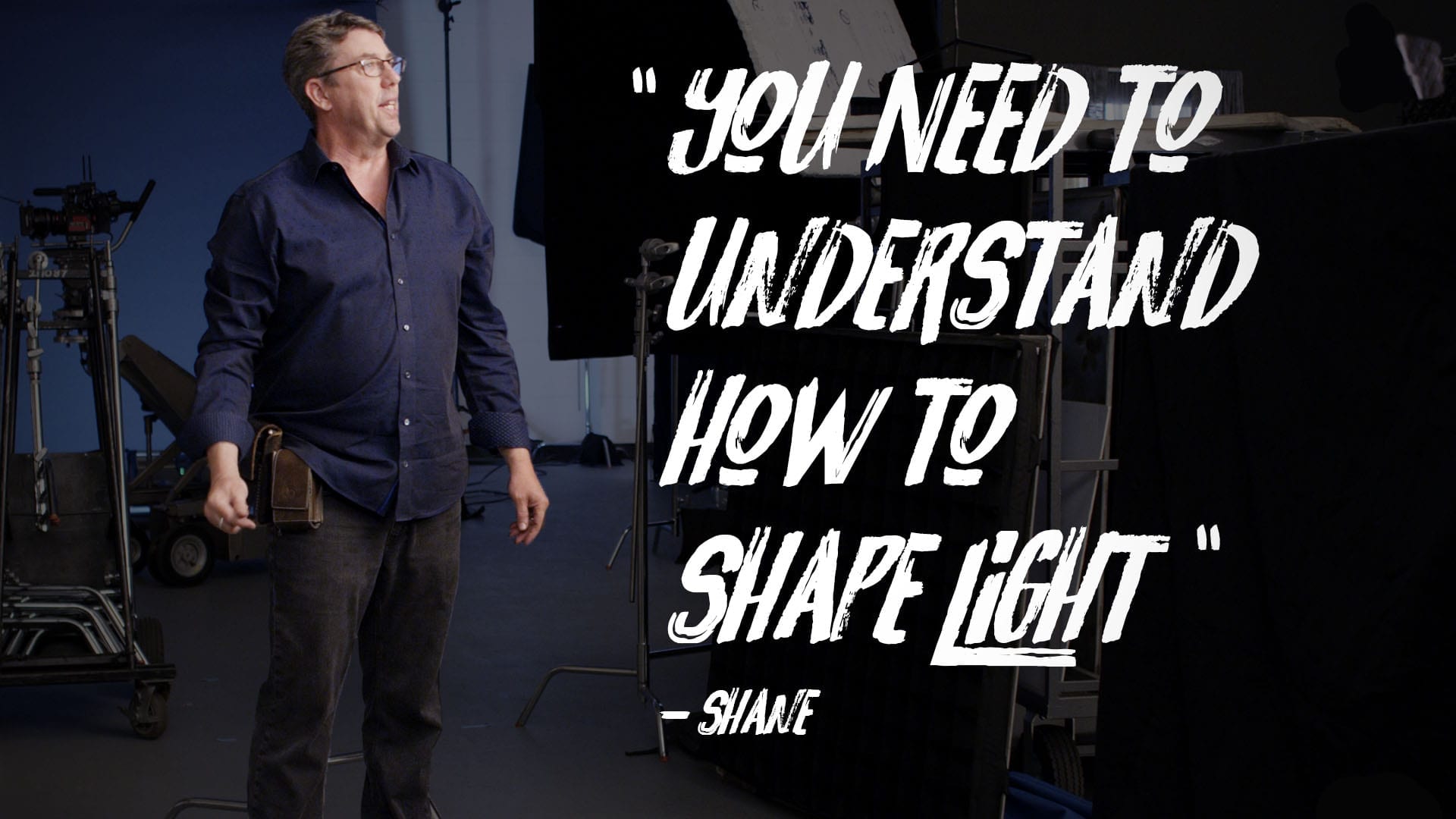
Control large light sources with solids and T-bones
Instead of going through an LCD, we have used 12×12 solids that are on T-bones that contain this whole thing so it’s not hitting me at all back here behind the 12×12. Because of the 12×12, I won’t be in the light.
If I walk in parallel to the light source and past the 12×12 sider, the light then hits me.
Lighting Under the Chin with a Drop Shadow
Let’s say we don’t want it to hit that ceiling and we want to bottom it a little bit. When a source is this huge it tends to wrap underneath the chin and I like to control that.
Wrapping underneath the chin just doesn’t look that good to me. It looks fake. I don’t want to compromise with a smaller source, though, because I like the quality of the bigger source. I like the chin to have a beautiful drop shadow so that it looks much more cinematic.
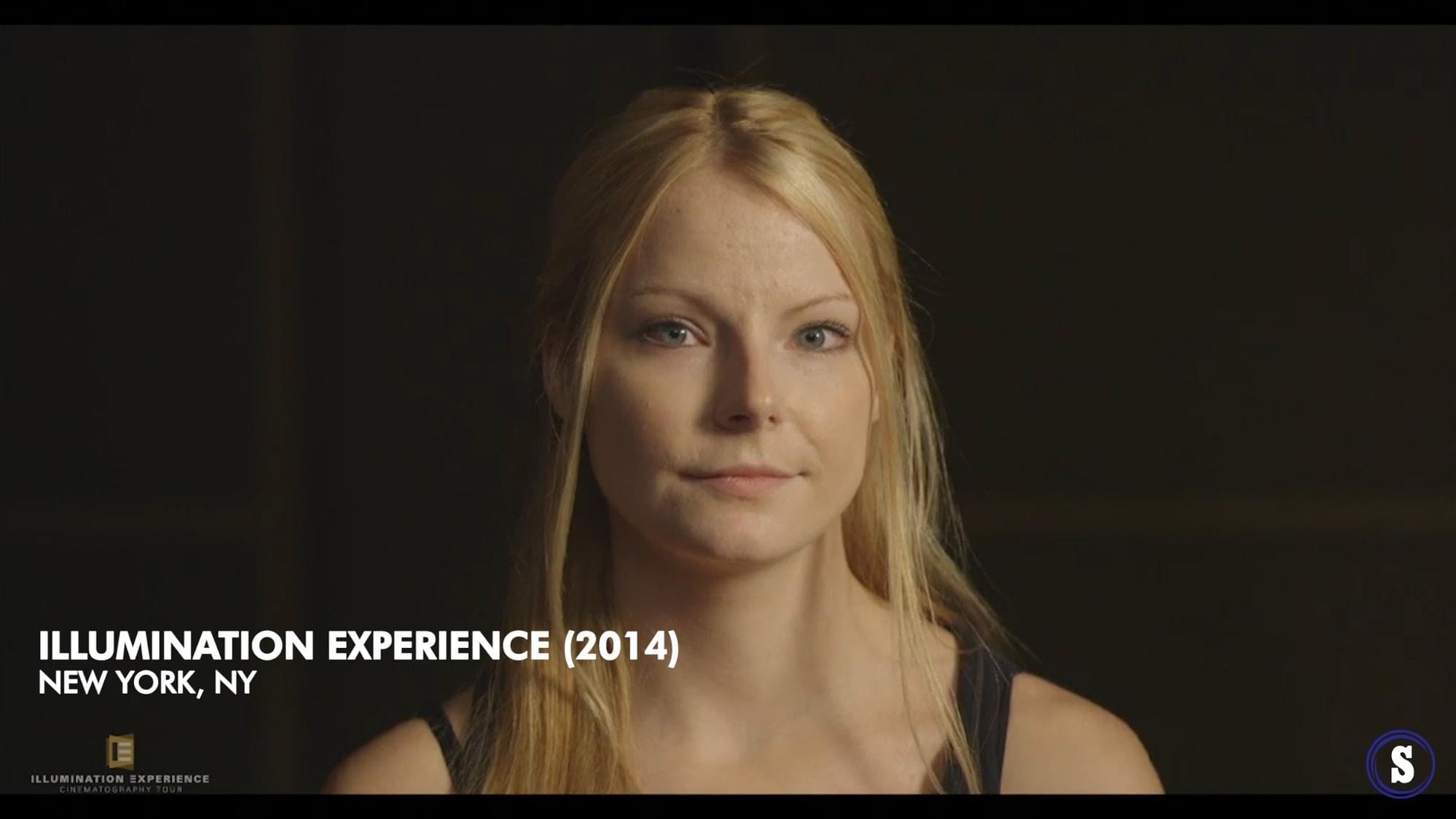
An example of some beautiful drop shadow from underneath the chin
What we can do is use more 12x12s. We’re looking at a massive source so using something like 4×4 solids would not be the right tool for the job. We’ll bottom it, and then we’ll also top it.
Again, you can see that we’re pointing the soft side out toward the product (or the actors). This is a big deal.
Floppy Etiquette
The etiquette of flying 4×4 floppies is the same. Even when using negative fill with the 4x4s, always put the soft side towards the product.
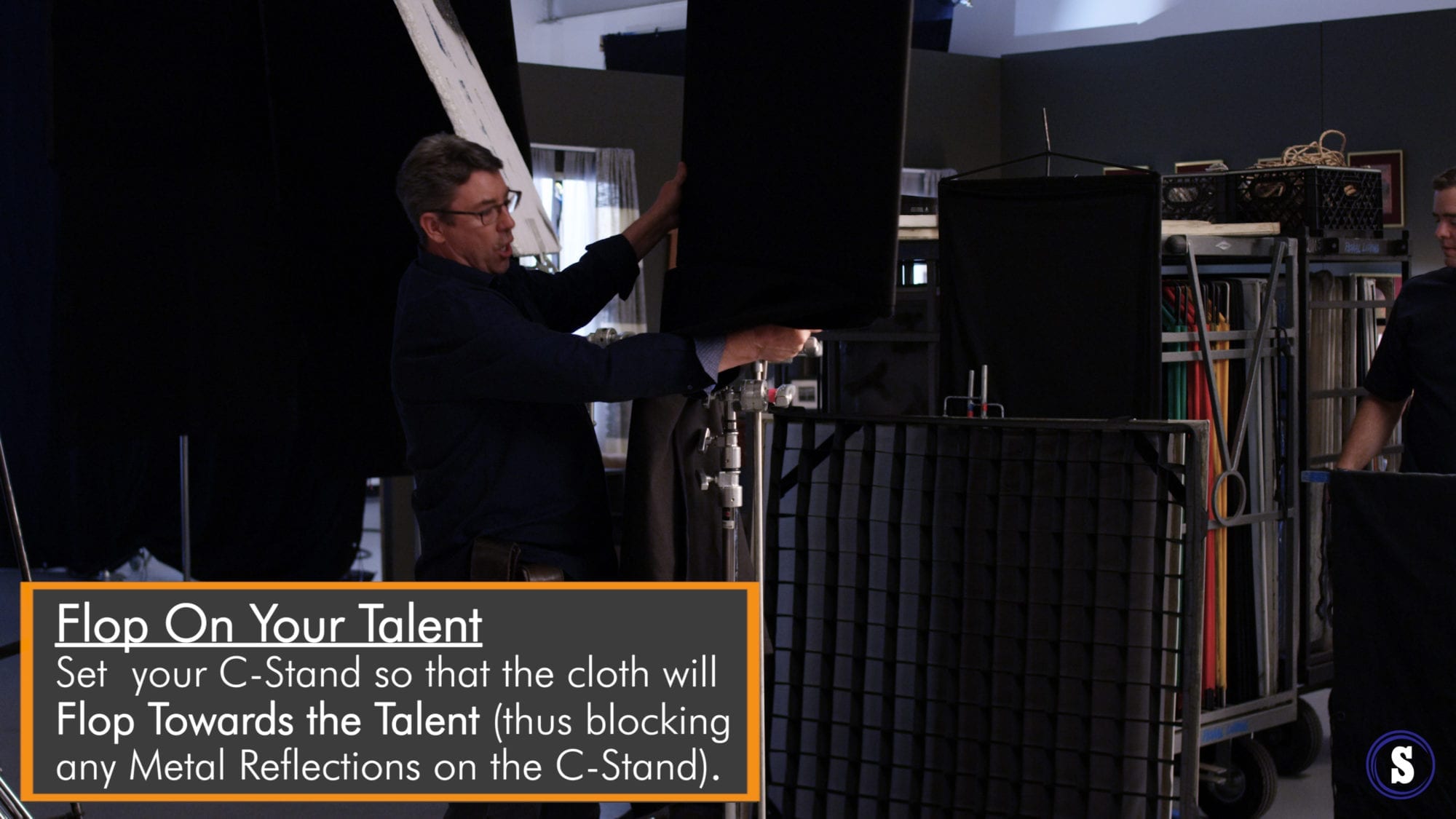
This is a must for setting your floppies: soft side toward the product
When setting your stand, you want it to flop down so no light can come in there, hit the chrome stand, and reflect onto the face. So, always set your c-stand so that the cloth will flop towards the talent. That’s very important.
I can’t tell you how many times I’ve had a situation where I’m looking at something and I’m like, ‘Where is that light coming from? It looks reflective and hot.’ Then, you realize that they set the floppy on the wrong side and the sun is hitting the c-stand and giving us a weird shadow on the face.
Let’s go up with this 12×6 bottomer. I don’t want that filling in underneath my face. It’s coming from above, which is great. Now, I want to eliminate all that light that is leaking into the ceiling. Let’s send another 12×6 to the moon.

Key Grip Dave Knudson sends the 12×6 topper up
Lighting Office Spaces
When shooting in a lot of office spaces, you have to deal with a lot of white walls as well as low, white, drop ceilings. When you turn on a light that is a fresnel or an open face, it’s going to fly everywhere.
You need to understand how to shape the light. Many times the light that is ruining the mood and the contrast is something that is actually hitting the ceiling. You may have shaped your bounce but you may have forgotten to shape the light behind the bounce that’s hitting the ceiling and ruining the mood in the room. It’s all about control.
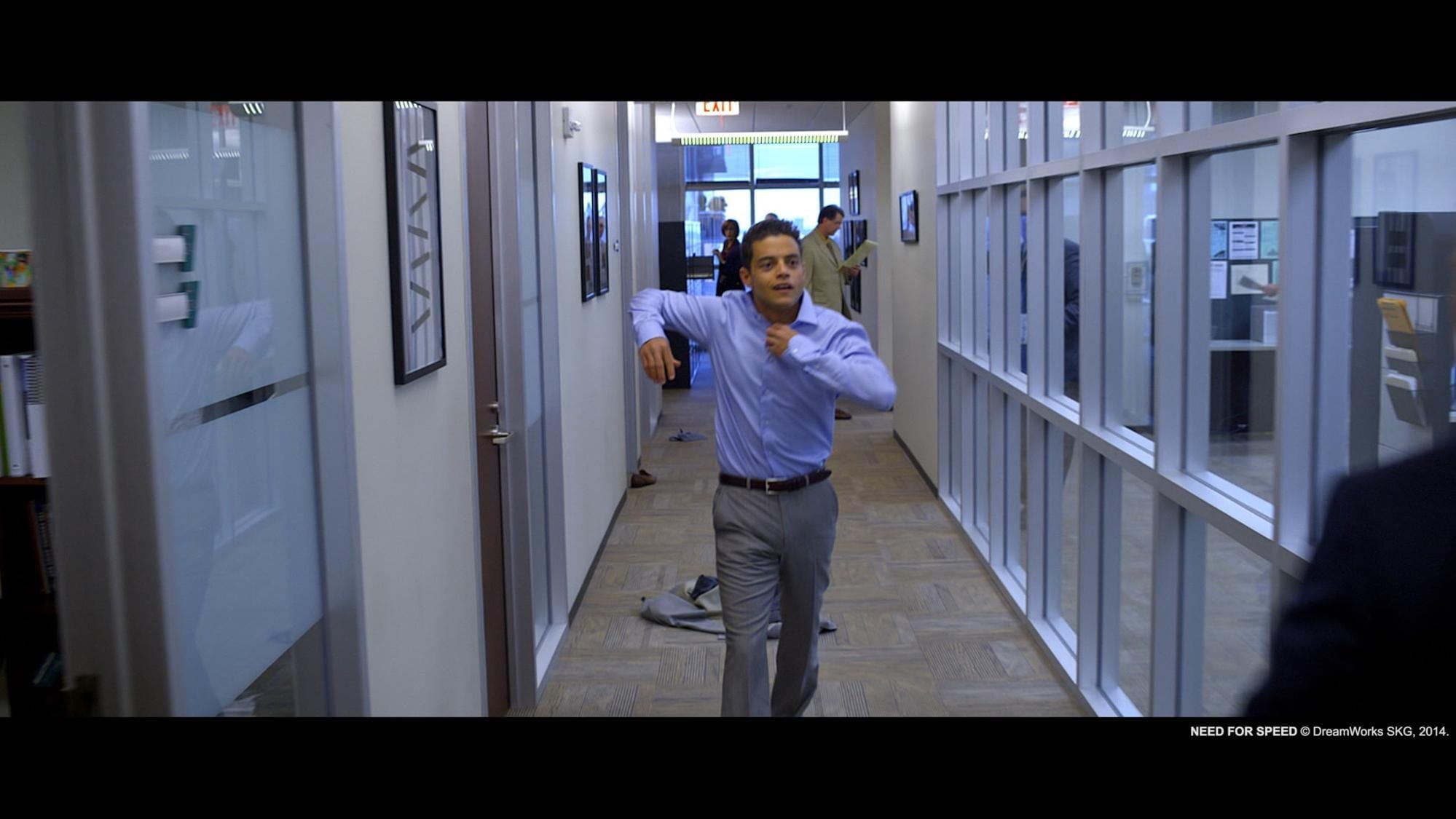
A still from an office shot in Need for Speed
Toppers and Bottomers
So now Dave has flown the 12×12 up as a topper and has completely eliminated all of that silver reflective light. Now, all that’s lighting me is this beautiful 6×12 swaft that’s between the 12x6s.
Nothing is wrapping under my chin now, nothing is coming from above. This was all done just by putting two 12×6 bottomers and toppers on our large source.
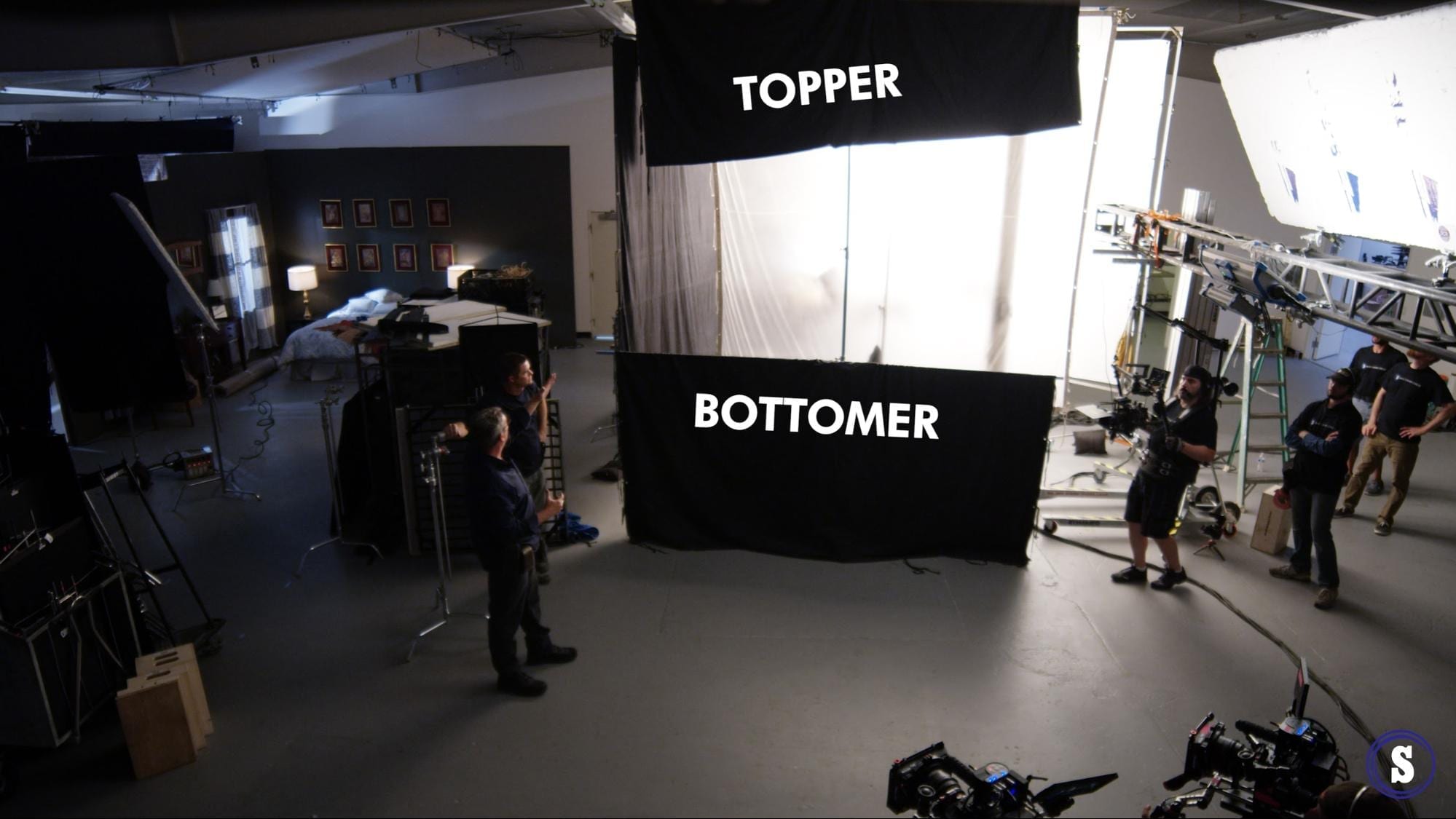
The topper and bottomer are both in place to shape the large source
Now, the one thing you wouldn’t want to do is try to fly behind the diffusion and set individual flags for each light source. That’s actually not going to do anything because it’s the light that’s bouncing off the 12×12 Matthbounce that’s then hitting the ceiling that is ruining your mood and contrast.
Gear Used in Video💡
- Matthews Hollywood C-Stand Grip Arm Kit: https://bhpho.to/3RsKzhN
- Matthews Black Flag – 24×36”: https://bhpho.to/3B7O9aF
- Matthews Black Floppy Top Hinge – 40×40”: https://bhpho.to/3QzeNip
- Matthews Floppy Cutter – 24×72”: https://bhpho.to/3QGIm1w
- Matthews Cordura Sandbag – 25 lbs: https://bhpho.to/3d6mjnd
- Matthews Shotbag – 15 lbs: https://bhpho.to/3LatPtT
- TRP Worldwide 50 Degree Fabric Egg Crate – 4×4’: https://bhpho.to/3qxZIDa
Shaping Light & Shadow
Learn how to shape & control like a Pro Grip
- 10 Lessons
- 1.5 hours of instructional videos
Shaping Light & Shadows is all about the art of shaping and controlling light. Shane Hurlbut ASC and his Key Grip Dave Knudsen go in-depth on what tools and specific gear are needed to create cinematic imagery. This is a must for anyone looking to pursue a career as a Grip. From controlling large sources, double diffusing, hard cuts to soft cuts, and many more.
- Detailed written breakdowns
- Top-down Blocking & Lighting schematics
- Paths and power distribution maps
- Side-by-side comparisons
- English Subtitles
ABOUT FILMMAKERS ACADEMY MENTOR SHANE HURLBUT, ASC
Director of photography Shane Hurlbut, ASC works at the forefront of cinema as a storyteller, innovator, and discerning collaborator, who brings more than three decades of experience to his art. He is a member of the American Society of Cinematographers, the International Cinematographers Guild/Local 600, and The Academy of Motion Picture Arts and Sciences.
Hurlbut frequently joins forces with great directors: McG’s Netflix Rim of the World and The Babysitter, plus Warner Bros. We Are Marshall and Terminator: Salvation; Scott Waugh’s Need for Speed and Act of Valor; and Gabriele Muccino’s There Is No Place Like Home and Fathers and Daughters. His additional film credits include Semi-Pro; The Greatest Game Ever Played; Into the Blue; Mr 3000; Drumline; 11:14, which earned Hurlbut a DVDX nomination; and The Skulls. Notably, his television credits include the first season of AMC’s Into the Badlands.
Earlier in his career, Hurlbut lensed iconic music videos including Guns N’ Roses’ November Rain. He collaborated with artists Smashing Pumpkins, Stone Temple Pilots, The Rolling Stones, and Nirvana. His debut feature film, The Rat Pack, received critical acclaim and earned him a nomination from the American Society of Cinematographers, making him the youngest nominee to date.

